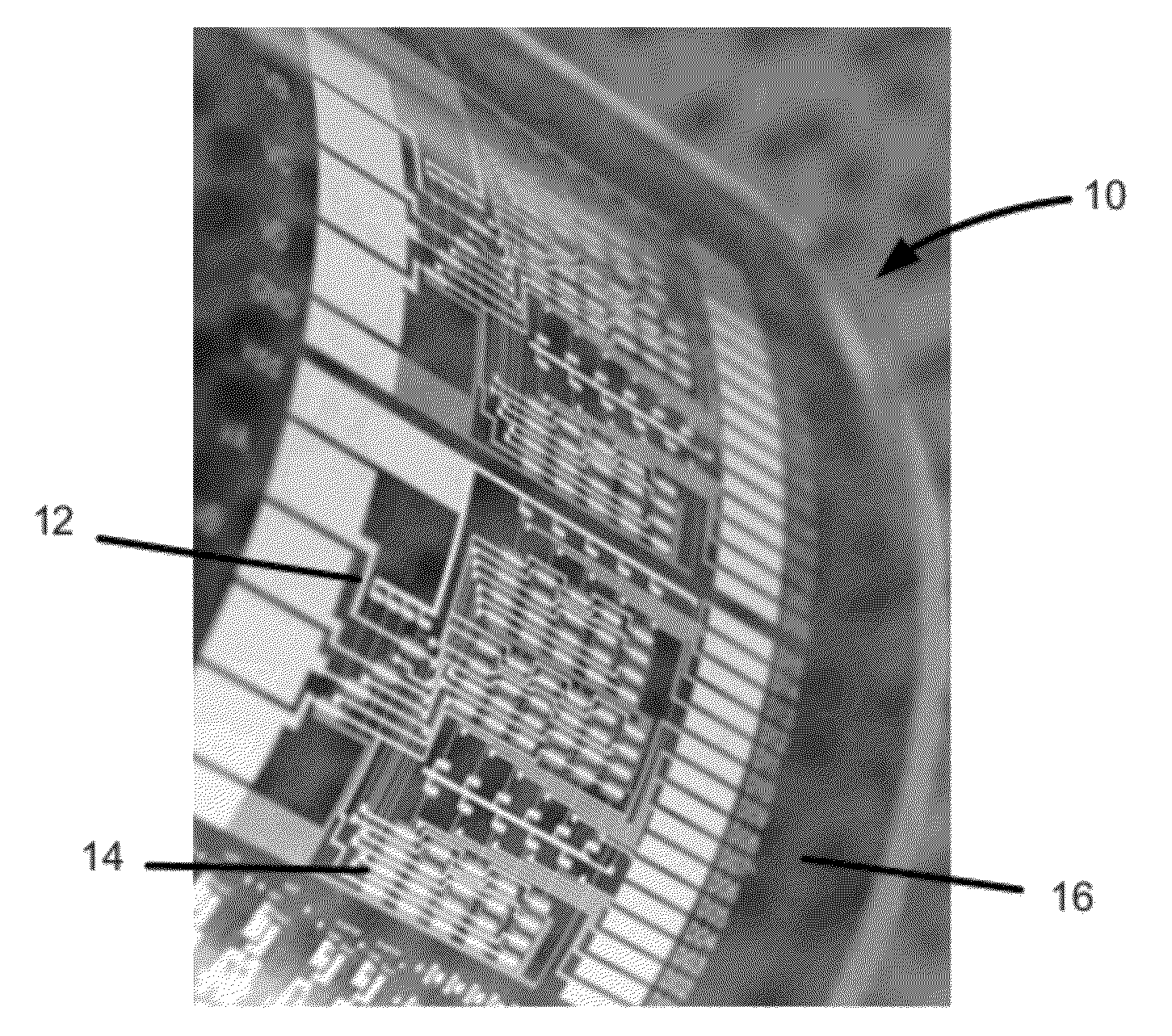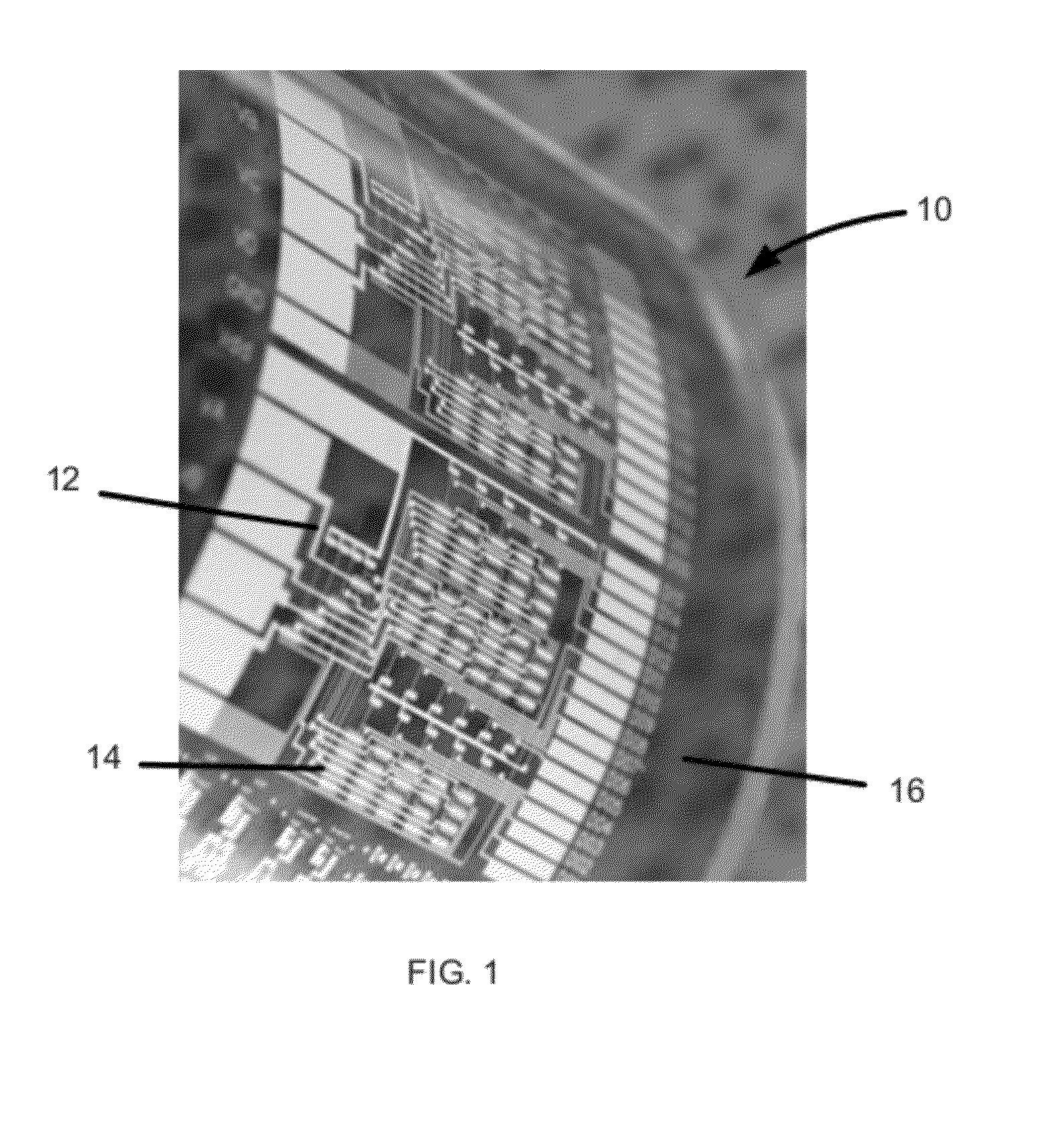Copper nanoparticle application processes for low temperature printable, flexible/conformal electronics and antennas
a technology of flexible/conformal electronics and copper nanoparticles, applied in the field of printed electronics, can solve the problem of limited minimum separation distance of traces, and achieve the effect of small separation distan
- Summary
- Abstract
- Description
- Claims
- Application Information
AI Technical Summary
Benefits of technology
Problems solved by technology
Method used
Image
Examples
Embodiment Construction
[0031]Some inkjet printers use a piezoelectric actuator to eject a drop of ink from an ink-filled chamber or channel beneath each nozzle. When a voltage is applied, the piezoelectric material changes shape, creating a pressure wave in the channel that ejects a droplet of ink from the nozzle with sufficient velocity to reach the paper on which the image is being created. Piezoelectric inkjet technology allows the use of a wider variety of inks than thermal inkjet technology as there is no requirement for a volatile component, and no issue with kogation of the ink. One printing process is referred to as “drop-on-demand”, wherein software directs the printheads to eject one or more droplets of ink from a nozzle only when it is desired to create an image on the portion of the paper immediately in front of the nozzle.
[0032]Copper particles having diameters of less than 20 nanometers have properties that are not linear extensions of their bulk properties. At these diameters, copper nanopa...
PUM
| Property | Measurement | Unit |
|---|---|---|
| diameter | aaaaa | aaaaa |
| diameter | aaaaa | aaaaa |
| diameter | aaaaa | aaaaa |
Abstract
Description
Claims
Application Information
 Login to View More
Login to View More - R&D
- Intellectual Property
- Life Sciences
- Materials
- Tech Scout
- Unparalleled Data Quality
- Higher Quality Content
- 60% Fewer Hallucinations
Browse by: Latest US Patents, China's latest patents, Technical Efficacy Thesaurus, Application Domain, Technology Topic, Popular Technical Reports.
© 2025 PatSnap. All rights reserved.Legal|Privacy policy|Modern Slavery Act Transparency Statement|Sitemap|About US| Contact US: help@patsnap.com



